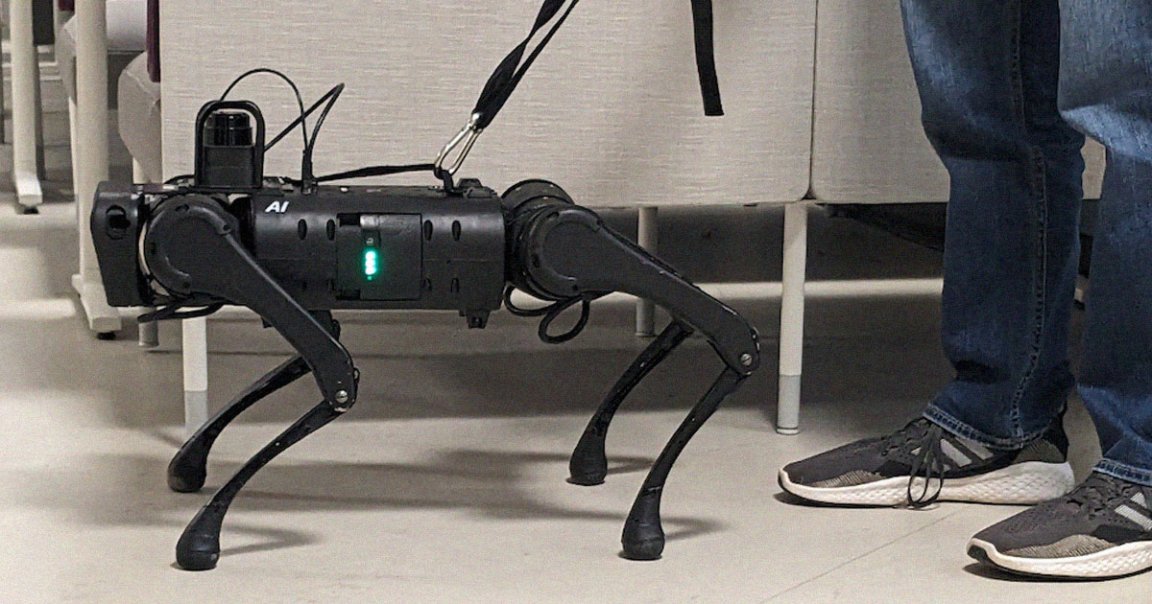
All Seeing Eye
Researchers have created the robotic equivalent of a seeing-eye dog for the visually impaired that can even respond when the user tugs on its leash.
In experiments, the robodog developed by researchers from Binghamton University led a person around a hallway, responding to input like gentle pulls to avoid obstacles.
The goal is to come up with a cheaper and more accessible alternative to the living dogs who are currently trained to help people who are visually impaired. Guide dogs have historically been in very short supply. Training them can take years, which can balloon the price to tens of thousands of dollars.
“We were surprised that throughout the visually impaired and blind communities, so few of them are able to use a real seeing-eye dog for their whole life,” said team lead Shiqi Zhang, professor of computer science at Binghamton, in a statement.
Follow the Robot
The team’s robot can learn how to respond to the tugs on its leash over time, not entirely unlike teaching a real dog a new trick.
“In about ten hours of training, these robots are able to move around, navigating the indoor environment, guiding people, avoiding obstacles, and at the same time, being able to detect the tugs,” Zhang said in the statement.
But beyond leading a visually impaired person around a hallway, the robodog still has a long way to go until it can fully replace the real thing.
For one, the team is hoping to “add a natural language interface,” per Zhang, which could allow users to converse with the robot to get help.
“For example, if I’m visually impaired and I tell the robot dog to walk into traffic, we would want the robot to understand that,” Zhang said.
In the meantime, the professor is envisioning the future of his team’s robot dog as a way for visually impaired people to get around public places like shopping malls and airports — a robotically-enhanced win for accessibility.
“It’s pretty much like how people use shared bicycles on campus,” Zhang explained.
More on visual impairment: Artificial Intelligence is Helping Restore Vision